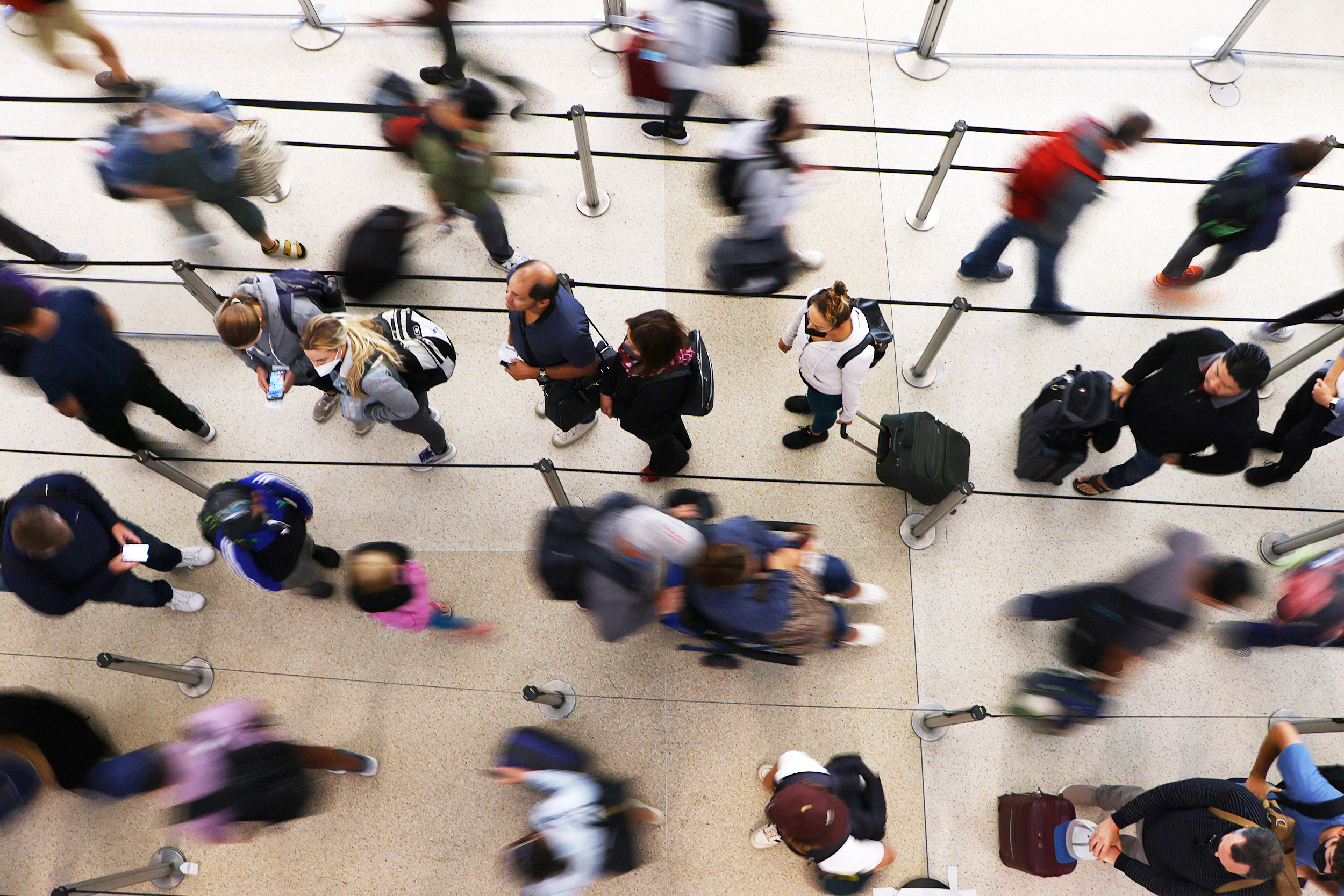Dust off your passports and break out your suitcases: Air travel is back, edging closer to pre-pandemic levels at numerous Bay Area airports.
Data from multiple major U.S. airports shows a slow but steady rise in passenger traffic at hubs across the country—and in 2022, Bay Area airports experienced a bigger uptick in passengers than some other major airports.
By the end of November, San Francisco International Airport (SFO) and San Jose International Airport (SJO) both saw passenger traffic increase by more than 50% above the same period during 2021, far outpacing the growth seen in some of the nation’s biggest air travel hubs. Oakland’s airport, too, saw traffic increase by 40% in the same time period.
Despite the jump, these three Bay Area airports serve a fraction of the passengers seen at major connecting hubs like Hartsfield-Jackson Airport in Atlanta, which serves as the main base for Delta Airlines: Roughly 38 million passengers passed through SFO in 2022, compared with the nearly 86 million who flew through Atlanta last year.
Nonetheless, many high-traffic airports reported stagnating passenger travel growth in the last year, with New York’s John F. Kennedy International Airport showing only a 34% year-over-year increase in November 2022. In the same period for the year prior, JFK’s passenger travel had increased by a whopping 298%, as passengers came in droves to the airport following 2020’s devastating year for air travel.
For local hubs like Oakland, however, airport representatives say that their growth can be attributed to the pandemic easing up, as well as new domestic air passenger routes and upgraded airport amenities.
“2022 was certainly a year of recovery and growth here at Oakland International Airport. We see that growth in our passenger traffic levels, as well as in the improvement of our airfield and terminal facilities,” wrote Bryant L. Francis, director of aviation at the Port of Oakland, in a statement.
Looking at full-year 2022 data, Oakland Airport has seen an 82% return to pre-pandemic passenger travel levels, on par with other airports but still outpacing SFO’s lagging pandemic recovery.
A Tough Year for Air Travel
These passenger stats might signal some hope in what was ultimately a turbulent year for airports throughout the Bay Area.
Hourslong security lines and restaurant closures clogged travel in June, and a slew of SFO workers went on strike in September, demanding higher wages and better health insurance.
During the holiday season, brutal storms across the country entangled Bay Area airports in a travel nightmare. Hourslong airport wait times around Christmas Day stretched into nearly a week of cancellations and delays for some travelers, as SFO and Oakland bore the brunt of an epic systemwide meltdown that left few U.S. airports unaffected. Even Santa missed Christmas this year, due to Southwest Airlines’ system implosion.
And just days into 2023, the Federal Aviation Administration (FAA) grounded all domestic flights for a few hours, due to a computer outage.
